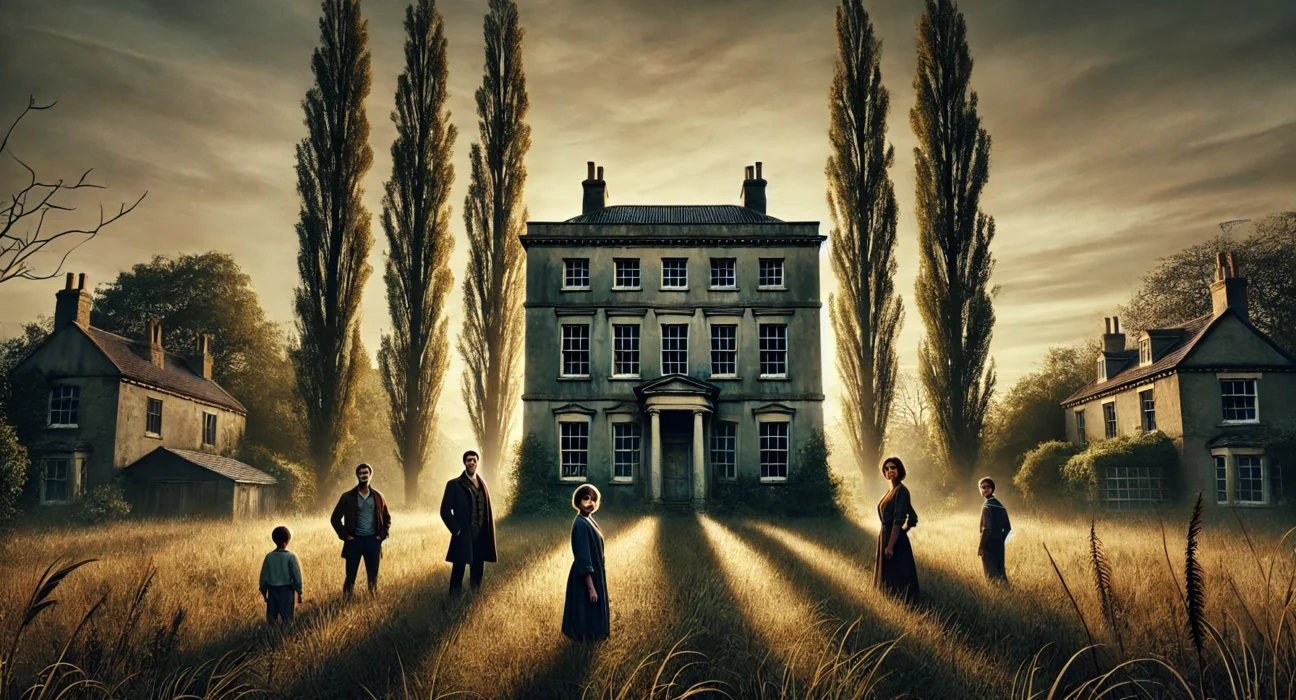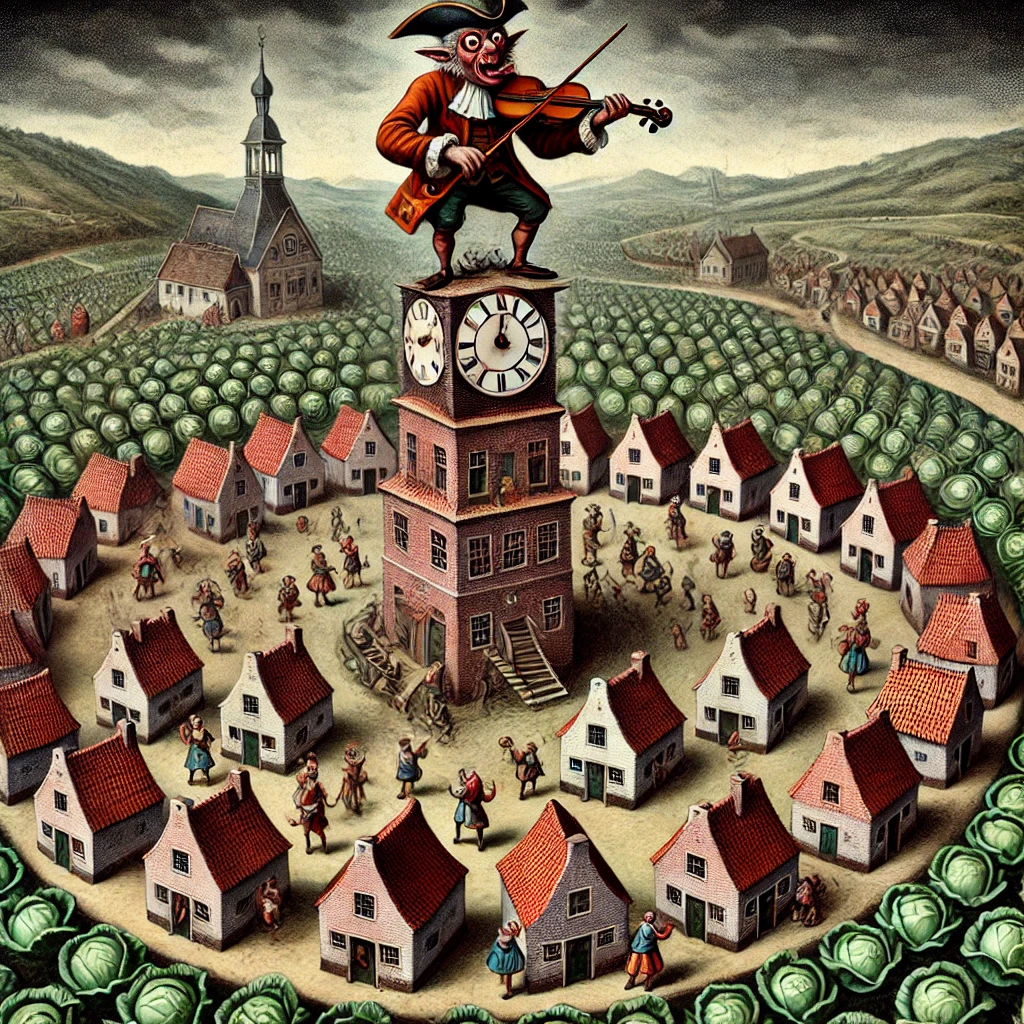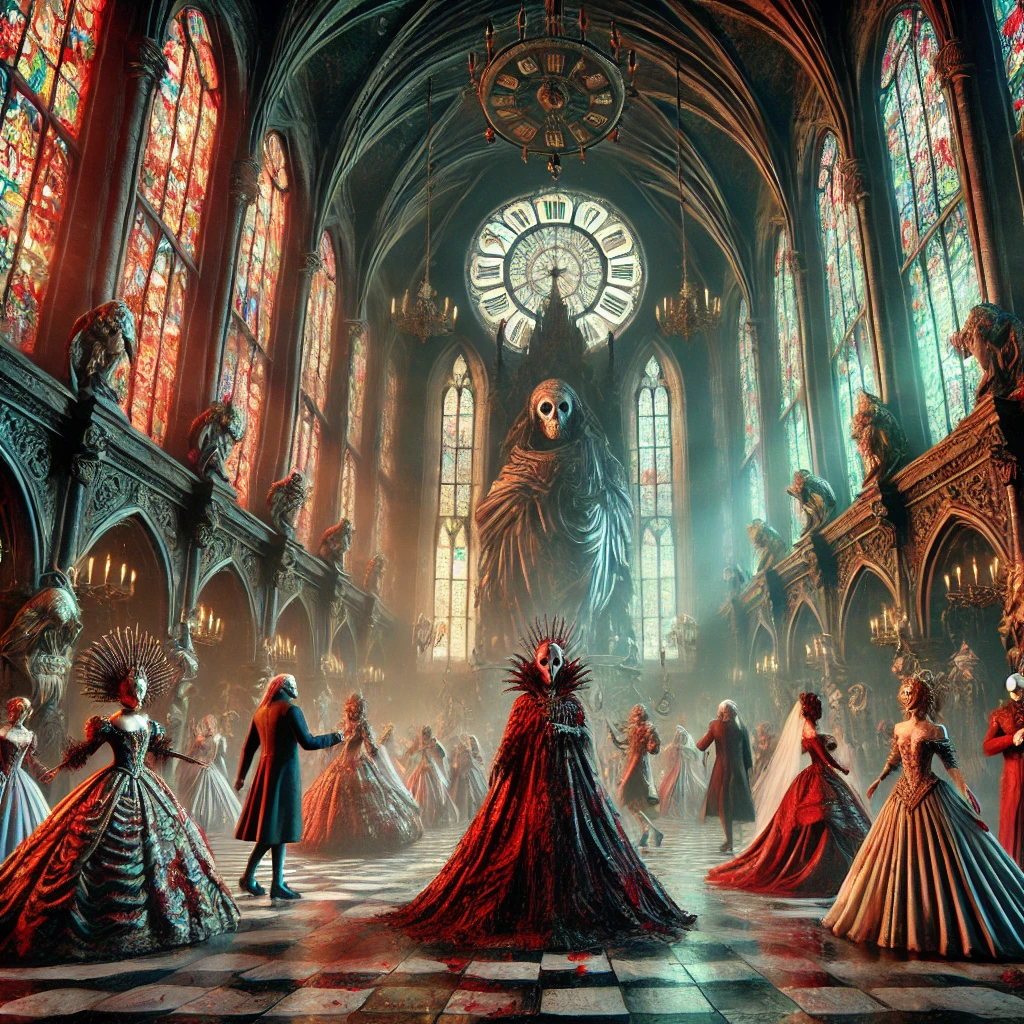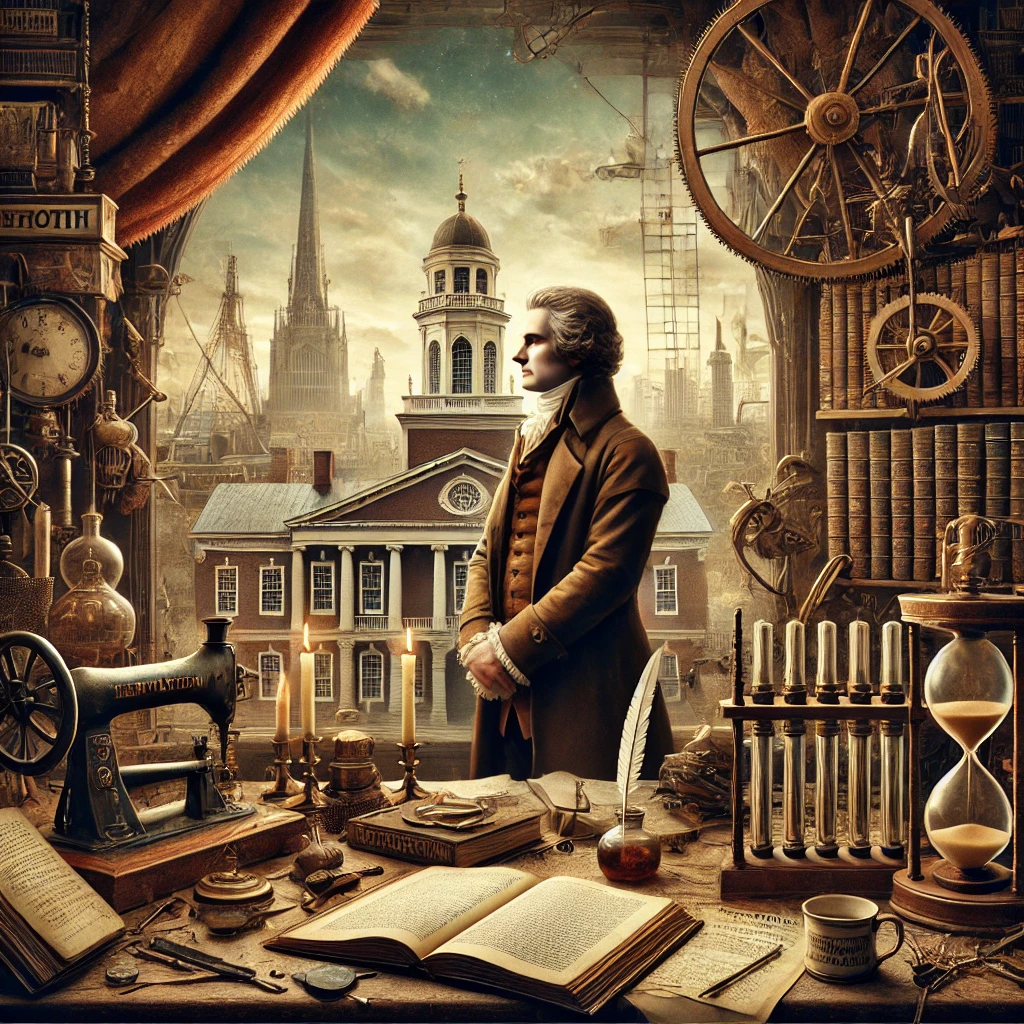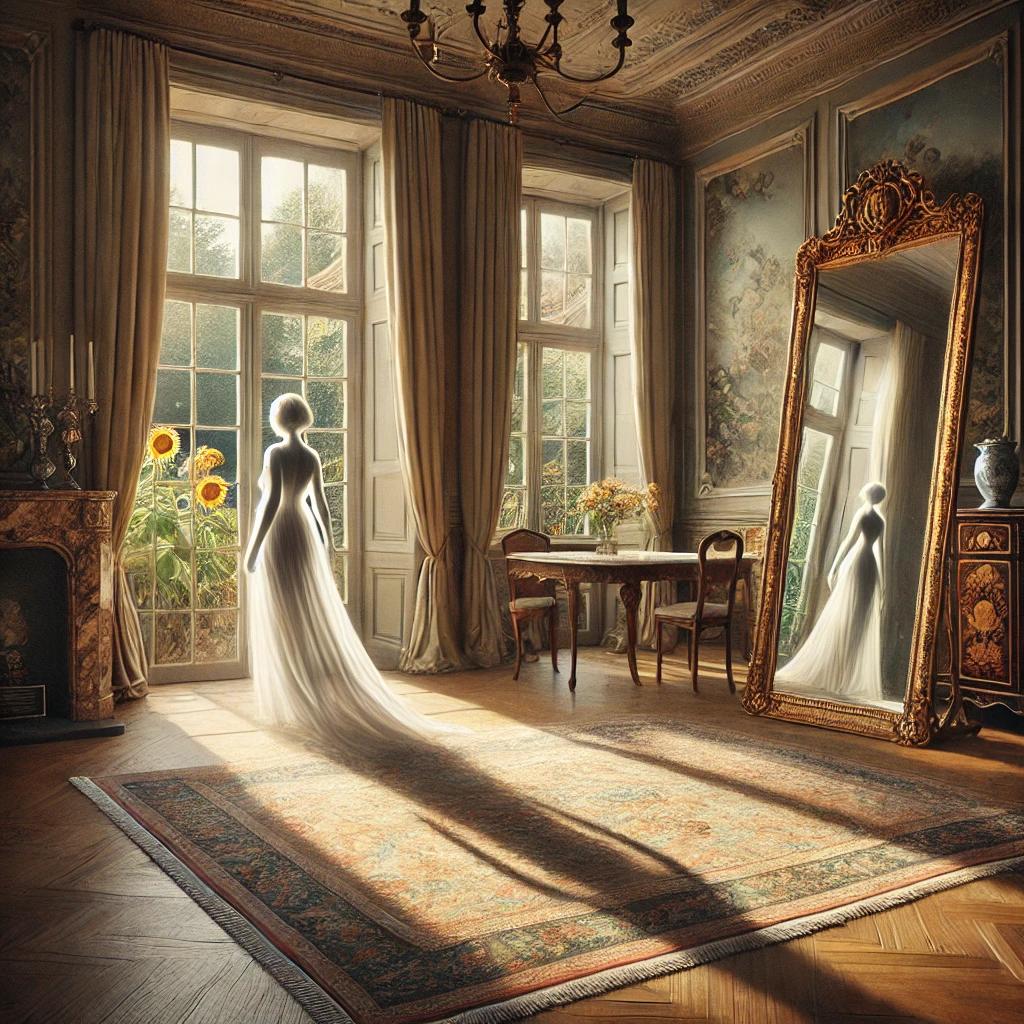The Haunted House, a novella written by Charles Dickens and published in 1859, explores the Victorian fascination with the supernatural. This story is often included in the genre of ghostly tales, blending humor, social commentary, and eerie mystery. Dickens narrates the tale through a group of friends who rent a purportedly haunted house for the Christmas season, each experiencing its strange occurrences differently.
Plot Summary
The house stood alone, veiled in shadows from tall poplar trees, isolated and neglected. Its presence evoked a sense of foreboding. No one lived there, no one dared, for the whispers of hauntings had long taken root in the nearby village. A man, drawn by curiosity, arrived one autumn day, contemplating its stillness. He was looking for a place in the country to recover his health, and a friend had recommended the house, intrigued by its reputation. He felt compelled to see it for himself, dismissing the eerie warnings of villagers who avoided the place like a plague.
Despite its outward charm, the house bore the weight of decay. Paint peeled from the walls, rooms lay abandoned, and the pervasive smell of dampness clung to the air. Yet, something far deeper than physical disrepair lingered in the atmosphere—an almost tangible sense of unease. The man, accompanied by his sister Patty, decided to stay, undeterred by the village landlord’s hesitations and the ominous tales of bells ringing on their own, doors slamming without cause, and the ghostly figure of a hooded woman roaming the grounds.
As night fell on their first evening, the house revealed its true character. Master B., a former resident, was said to still haunt the place, his restless spirit ringing a particular bell that echoed through the halls. The bell soon began its toll, unprovoked by human hands. The sisters and servants in the house grew uneasy as the odd occurrences mounted. Master B.’s bell rang with increasing frequency, accompanied by mysterious footsteps that reverberated in the empty corridors.
The servants, terrified by the house’s dark energy, were unable to sleep and constantly felt the eyes of invisible presences watching them. The household was soon swept into hysteria, with one of the maids claiming she had seen “Eyes” in the night, shining eerily from the corners of the rooms. The deaf stableman and even the narrator’s loyal dog, Turk, showed signs of agitation, howling in response to sounds no one else could hear.
The narrator tried to maintain his rational composure, determined to solve the mystery of the hauntings through investigation rather than fear. His skepticism clashed with the heightened anxiety among the household. One night, as he lay in the room known as Master B.’s, the strange occurrences escalated. He awoke to find himself sharing his bed with a skeleton. The bones shifted beside him, and he leapt from the bed in terror, only to see a boyish figure standing at the foot of the bed, translucent and forlorn. Master B. had appeared.
The boy’s ghost did not speak, but his presence lingered. Every night, the narrator felt the weight of the boy’s spirit. The house became a prison of unrelenting dread, its oppressive silence interrupted by sudden crashes and whispers that seemed to come from the very walls. The servants, gripped by terror, began to exhibit strange behaviors—fainting spells, hysterical fits, and paralyzing fear. Each incident fed into the next, spiraling the household into chaos.
In an effort to control the situation, the narrator decided to dismiss the servants and bring in a circle of trusted friends. Together, they would face the house’s terrors without outside interference. His sister supported the plan, knowing they could not continue living in such madness. Their friends arrived, each drawing lots for rooms. Among them were John Herschel and his wife, Alfred Starling, and the steadfast sailor Jack Governor, who treated the whole situation with robust common sense, believing no ghost could stand up to a well-made meal or a good laugh.
Despite their bravado, the haunting continued to take hold of the house. The ghostly presence of Master B. persisted, and the chilling figure of the hooded woman was glimpsed several times near the poplar trees at the front of the house. One night, the bells rang so furiously that the entire household was roused from sleep, only to find nothing but a draft running through the hallways.
Jack Governor and his friend Nat Beaver took it upon themselves to physically investigate the house. They removed old fixtures, pried loose boards, and even climbed to the roof to silence the moaning weathercock that added to the house’s cacophony. But no matter what physical changes they made, the haunting remained. The figures of the past, trapped within the walls, could not be exorcised through mere earthly efforts.
As Twelfth Night approached, the group resolved to reveal all their experiences in a final meeting. They had agreed from the start to keep their individual experiences to themselves until this night, believing that sharing their stories too soon might inflame their imaginations. When the night arrived, each recounted strange dreams, sightings, and eerie sensations that seemed to culminate in the figure of the hooded woman and the presence of the boy.
As they spoke, the realization settled that the house was not merely haunted by external spirits but by the living memories of those who had suffered within its walls. Master B.’s tragic fate, the hooded woman’s sorrowful vigil—these were echoes of past lives forever imprinted on the house. By occupying its rooms, the household had unwittingly invited these memories to resurface.
Though they could not fully rid the house of its ghosts, the experience bonded the group in a profound way. The mysteries of the house remained, but the group left with a deeper understanding of the strange interweaving of life, death, and memory. They departed as the last embers of Christmas died away, leaving the house to its silent, shadowed existence once more, knowing that its mysteries would continue to haunt those who dared to step within its walls.
Main Characters
The Narrator (John) – A gentleman seeking respite in the countryside. His curiosity and skepticism lead him to investigate the haunted house, and he orchestrates the entire experiment with his sister. Throughout the tale, he maintains a blend of humor and realism, despite the strange happenings.
Patty (The Narrator’s Sister) – A strong-willed and pragmatic woman, she accompanies her brother to the house and insists they face the hauntings head-on. Her determination helps keep the group united.
Master B. – A mysterious young boy whose ghost is associated with a particular room in the house. His presence brings unsettling experiences for the narrator, though his story remains enigmatic.
Ikey – A mischievous local boy who both believes in the haunting and contributes to the eerie atmosphere with his playful yet suspicious behavior. He helps add to the tension with stories about the house.
Other Visitors (Friends and Relatives) – Various other characters, including the narrator’s friends and relatives, contribute to the household’s dynamic. Each guest experiences different manifestations of the supernatural, reflecting their personalities.
Theme
Supernatural vs. Reality – Dickens toys with the tension between the supernatural and the rational mind. The story is full of unexplainable events, yet there is always a sense of skepticism lingering, as though everything might have a logical explanation. This theme highlights Victorian England’s fascination with ghosts and the afterlife.
Community and Isolation – The isolated nature of the haunted house juxtaposes the sense of community among the characters. They form a self-sufficient group, helping each other manage the house’s eerie atmosphere, yet each person’s experience is deeply personal and isolating.
Fear and Paranoia – The novel delves into the human psyche, examining how fear can distort perception. Even when faced with mundane explanations, the characters often succumb to paranoia, demonstrating the power of fear.
Childhood Innocence and Lost Dreams – The story of Master B., in particular, touches on themes of lost childhood and the fragility of life. His ghostly presence embodies a sense of regret and unfulfilled potential.
Writing Style and Tone
Charles Dickens employs a mixture of gothic and comic elements in The Haunted House. His prose is rich in detail and description, allowing readers to feel immersed in the strange atmosphere of the house. At the same time, Dickens’ signature humor pervades the narrative, particularly in his characterization and the absurdity of some situations. This blend of tones creates an unsettling yet often amusing narrative that keeps readers both engaged and slightly on edge.
Dickens also uses a first-person narrative to great effect, particularly in terms of drawing readers into the mind of the narrator. The mix of personal reflection and direct dialogue adds to the intimacy of the story, as the narrator leads the audience through the eerie and unexplained occurrences with wit and skepticism. His use of vivid, picturesque language paints a compelling image of the haunted house and its surroundings, while also teasing out the tension between what is real and what might be supernatural.
We hope this summary has sparked your interest and would appreciate you following Celsius 233 on social media:
There’s a treasure trove of other fascinating book summaries waiting for you. Check out our collection of stories that inspire, thrill, and provoke thought, just like this one by checking out the Book Shelf or the Library
Remember, while our summaries capture the essence, they can never replace the full experience of reading the book. If this summary intrigued you, consider diving into the complete story – buy the book and immerse yourself in the author’s original work.
If you want to request a book summary, click here.
When Saurabh is not working/watching football/reading books/traveling, you can reach him via Twitter/X, LinkedIn, or Threads
Restart reading!


